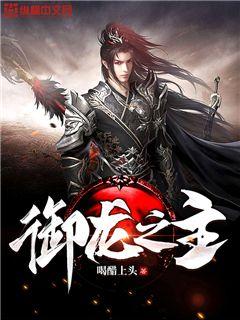
文章摘要:马盖蒂是一位融合了篮球才华与商业头脑的传奇人物。他不仅在篮球界取得了辉煌的成就,还通过商业投资和品牌建设,成为了跨界成功的典范。本文将从他的运动生涯起步、商业投资策略、品牌建设过程和社会影响力四个方面,深入探讨马盖蒂独特的传奇经历。
1、运动生涯起步
马盖蒂从年轻时期展示出对篮球的卓越天赋。早期的训练和比赛经历为他未来的成功打下了坚实基础。在大学篮球赛场上的表现引起了广泛关注,奠定了他进入职业篮球联赛的基础。
随着他在职业生涯中的逐步成长,马盖蒂展现出了超凡的运动才华和领导能力。他在球场上的表现不仅为自己赢得了无数荣誉,也为他的个人品牌奠定了坚实的基础。
逐步发展的职业生涯使他成为球迷心中的传奇,为他在后续的商业活动中提供了强大的影响力和号召力。
2、商业投资策略
马盖蒂不仅在球场上有过人的表现,还展示了在商业投资方面的敏锐眼光。他选择的投资项目和策略反映了他对市场趋势的深刻理解和对风险的有效管理。
他在投资领域的成功案例,如何从传统的商业模式中创新,以及如何利用个人品牌和网络影响力扩展投资的覆盖面,都是他商业投资策略的重要组成部分。
通过聪明的投资决策,马盖蒂不仅实现了财务上的成功,还加强了他作为跨界企业家的地位和声誉。
3、品牌建设过程
马盖蒂的个人品牌建设过程展示了他在营销和品牌管理方面的独特见解。他如何利用自己在体育界的影响力,打造出具有持久力和认知度的品牌形象,是品牌建设过程中的关键点。
他与品牌合作伙伴的合作模式,以及如何通过社交媒体和活动营销扩展品牌的影响力,都体现了他作为一名成功品牌推广者的策略和技巧。
通过不断的品牌建设,马盖蒂成功地将自己的名字和形象与成功、领导力和社会责任等价值观联系在一起,成为了一个广为人知的品牌符号。
4、社会影响力
马盖蒂不仅仅是一名成功的运动员和企业家,他还通过慈善事业和社会活动展示了他的社会责任感和影响力。他的慈善基金会和公益活动对社会的积极影响不可忽视。
他如何利用自己的资源和网络,为社区和弱势群体带来积极的改变,以及他在推动社会问题上的领导作用,都展示了他作为一个社会领袖的重要性。
马盖蒂通过自己的行动和言论,激励和影响了无数人,成为了一个具有深远影响力的公众人物。
总结:
马盖蒂不仅在篮球界取得了辉煌的成就,还通过独特的商业头脑和社会影响力,将自己打造成为一个跨界传奇。他的经历不仅是个人成功的故事,也是成功和领导力的典范,对当今社会仍然具有深远的启示意义。
通过运动生涯起步、商业投资策略、品牌建设过程和社会影响力四个方面的探讨,我们可以更全面地理解和欣赏马盖蒂在不同领域展示出的卓越才华和领导力。
### 文章摘要
本文旨在探讨如何打造一个完美的边路快攻球员。首先,我们将分析快攻球员的关键特质和技能要求。其次,深入探讨训练和技术提升的关键因素,包括速度、技术和战术意识的培养。然后,探讨心理素质在边路速攻中的重要性,并提供有效的心理训练方法。最后,结合案例分析和实战经验,总结如何在比赛中充分发挥边路快攻的潜力,为球队赢得胜利。
---
1、关键特质和技能要求
边路快攻球员的关键特质包括速度、爆发力和技术娴熟度。速度不仅仅是奔跑速度,还包括快速变向和加速能力。爆发力决定了球员在关键时刻能否迅速突破防守。此外,优秀的技术娴熟度,尤其是过人和传中技术,是成为边路快攻高手的基础。
为了培养这些特质,训练应侧重于提升速度和爆发力,同时不忽视技术细节的精益求精。定期评估和调整训练计划,确保球员在这些关键技能上持续进步。
此外,战术意识也至关重要,边路快攻不仅仅是个人技术的展示,还需要与团队战术紧密结合,理解如何在不同战术体系下发挥最大作用。
2、训练和技术提升
速度和爆发力的提升可以通过多种训练方法实现,包括短跑训练、爆发力训练和力量训练的结合。例如,爆发力训练可以包括跳跃和快速加速的模拟训练,以及专门针对肌肉爆发力的力量训练。
技术提升则需要注重基础动作的反复练习和模拟比赛中的应用实践。传中和过人技术的精细化训练,可以通过对抗训练和技术教学视频的学习来加强。
定期视频分析和技战术讨论是技术提升过程中的重要一环,通过分析自身和其他优秀球员的比赛录像,可以帮助球员发现自身技术上的不足和提升空间。
3、心理素质的培养
在边路快攻中,心理素质的稳定性和适应性至关重要。压力管理、集中注意力和快速决策能力是成功的关键。球员可以通过冥想和放松训练来提升心理素质,确保在比赛中保持冷静。
另外,自信心的建立和团队合作精神的培养也是心理素质的重要组成部分。通过团队建设活动和心理辅导,球员可以在竞技场上表现出色。
在比赛中的心理准备同样重要,包括在比赛前的准备和比赛中的应对策略。有条不紊地规划和执行比赛前的准备程序,可以帮助球员在关键时刻做出正确的决策。
4、案例分析与实战经验
通过分析顶尖联赛中的边路快攻球员,可以发现他们成功的共同特点和策略。例如,如何利用速度优势打破对方防线,如何在关键时刻完成精准的传中等。
实战经验的积累也是打造完美边路快攻球员不可或缺的部分。参与更多的比赛和训练,积累实战经验,并从中吸取教训和经验,不断调整和完善自己的比赛策略和技术应对能力。
结合案例分析和实战经验,可以为球员提供具体的指导和建议,帮助他们在实战中更好地应对各种挑战和情况。
总结:
打造一个完美的边路快攻球员,需要全面培养速度、技术、战术意识和心理素质。通过系统的训练和精细化的技术提升,结合良好的心理素质和丰富的实战经验,才能在比赛中充分发挥边路快攻的潜力,为球队创造更多胜利的机会。
文章总结内容第一自然段:
打造边路速攻天才,需注重速度、技术和心理素质的全面提升。
文章总结内容第二自然段:
实战经验和案例分析是成为顶尖边路快攻球员的重要支持。
### 文章摘要
NBA球员火花:探索球场内外的精彩化学反应。在NBA赛场上,球员们不仅仅是运动员,更是化学反应的参与者。他们的个性、技术和战术在碰撞中产生层层迸发,创造出无数独特的化学效应。本文将从团队默契、个性碰撞、技术结合和文化共鸣四个方面,深入探讨这些精彩的化学反应是如何在球场内外展现的。
---
1、团队默契
团队运作的默契在NBA比赛中至关重要,而这种默契不仅体现在传统的配合和战术执行上,更深层次的是球员之间的信任和理解。在场上,一场比赛往往需要球员们的紧密配合才能创造出最佳表现。例如,黄蜂队的点卫和大前锋之间的配合,不仅是简单的传球与接球,更是一种默契的延续和协作的体现。
此外,团队默契的建立还可以通过球员之间的沟通和理解来增强。勇士队的后场组合,凭借着不断的沟通和互相理解,能够在关键时刻做出最准确的决策,这种默契使得他们在竞技场上如臂使指。
最后,团队默契还体现在球队文化的传承上。马刺队多年来一直强调的是一种团队优先的文化,这种文化贯穿于每个球员的血脉中,使得他们不仅在场上,而且在场外都能形成高度的团队默契。
2、个性碰撞
每个球员都有自己独特的个性和风格,这种个性在比赛中常常产生出意想不到的火花。例如,雷霆队的两位超级巨星,他们截然不同的个性和打法,却在场上形成了一种奇妙的化学反应。一个球员可能擅长进攻,而另一个则善于防守,他们的个性碰撞会使得球队更加全面和均衡。
此外,个性碰撞还表现在球员之间的竞争和合作关系上。例如,湖人队的两位得分手,尽管有时会因为个性碰撞而产生争执,但正是这种竞争激励了他们在比赛中互相提升,形成更强大的整体效果。
最后,个性碰撞也推动了球员个人技术和战术风格的不断创新和发展。凯尔特人队的年轻球员们,通过不断的个性碰撞和交流,使得他们的技术在赛季中不断进步,最终取得了令人瞩目的成绩。
3、技术结合
在NBA比赛中,球员们的技术结合是精彩化学反应的关键之一。技术结合不仅仅是简单的技术细节,更多的是技术的高度契合和互补。例如,火箭队的两位后卫,他们的投篮和组织能力的完美结合,使得球队的进攻更加多样化和有效。
技术结合还可以体现在球员之间的传球和配合上。热火队的前场球员们,通过精准的传球和无缝的配合,能够在对手防守的最后时刻找到最佳出手机会,这种技术结合的精彩效果常常令人赞叹。
此外,技术结合还需要球员们对自己技术特点的深刻理解和运用。快船队的球员们,通过对篮板球和快攻的精准掌控,展示了他们在技术结合方面的卓越水平。
4、文化共鸣
NBA球队的文化共鸣是球员化学反应中的一种深层次体现。文化共鸣不仅仅是球队的口号和标语,更多的是一种文化传承和信念的统一。例如,公牛队的传统文化,强调团结和奋斗精神,这种文化共鸣使得球队不论在何时何地都能够凝聚力量。
文化共鸣还能够在球队内部形成一种特有的凝聚力和认同感。尼克斯队的球员们,通过对球队历史和文化的深入理解,形成了一种共同的信仰和精神内核,这种文化共鸣成为他们在比赛中不可或缺的力量来源。
最后,文化共鸣还可以促进球员个人和团队的发展和成长。雷霆队的年轻球员们,通过对球队文化的学习和融入,逐渐形成了一种共同的目标和追求,这种文化共鸣使得他们的成绩在赛季中稳步提升。
总结:
NBA球员之间的火花不仅仅存在于比赛中的技术和战术层面,更深刻地体现在他们的团队默契、个性碰撞、技术结合和文化共鸣中。这些精彩的化学反应不仅推动着球队的发展和壮大,也丰富了球迷们的观赏体验,成为NBA篮球文化中不可或缺的一部分。
在赛季的每一场比赛中,这些火花都在绽放,为全球的篮球爱好者带来无尽的惊喜和感动。
文章摘要的内容
曹飞,作为中国足球青训的先锋与领航者,不仅仅是一位教练和领导者,更是一位改革者和激励者。他通过创新的方法和坚定的信念,推动着中国足球青训体系的发展与进步。本文将从曹飞的教育理念、训练方法、青少年培养体系以及影响力四个方面展开详细阐述,揭示他在中国足球青训领域的重要贡献和影响。
1、教育理念与哲学
曹飞的教育理念根植于对足球教育的深刻理解与独特见解。他强调综合素质培养,不仅关注技术层面的训练,更注重心理素质、团队合作和领导力的培养。曹飞认为,足球不仅是一项运动,更是一种生活态度和价值观的体现。
他通过个性化的指导方法,激发每位球员的潜力,并注重培养球员的自主学习能力和解决问题的能力。曹飞的教育哲学影响了整个青训体系的发展方向,使得足球训练不再仅限于技术动作的训练,而是与个人成长和社会适应能力的综合提升相结合。
他的理念不仅仅停留在口头上,更在实际操作中得到了淋漓尽致的展示,为中国足球青训注入了新的活力与动力。
2、创新的训练方法
曹飞倡导的训练方法以创新著称,他充分利用现代科技手段和数据分析,精确评估球员的技能和身体素质。通过个性化的训练计划和定制化的课程,他有效地提升了球员的整体水平。
他的训练方法强调实战化训练,将训练与比赛紧密结合,注重在高强度、高压力的环境中培养球员的应对能力和临场发挥。这种方法不仅提高了球员的技战术水平,还增强了他们的比赛适应能力和心理素质。
曹飞的训练模式被认为是中国足球青训改革的重要创新,为培养具备国际竞争力的青少年球员打下了坚实的基础。
3、青少年培养体系
在青少年球员的培养体系中,曹飞注重从基层开始、全面覆盖的培养模式。他提倡从小培养技术的同时,注重个性发展和团队合作能力的培养,通过逐层筛选和淘汰,培养出适应高水平竞争的优秀球员。
他建立了完善的青训选拔机制和培养路径,使得优秀的青少年球员能够在良好的环境中成长,逐步接触并适应高水平赛事的要求。
曹飞的青少年培养体系不仅注重短期成绩,更关注长远发展,培养出了一批批具备潜力和实力的年轻球员,为中国足球的未来注入了希望。
4、影响力与成就
曹飞作为中国足球青训的领军人物,其影响力不仅体现在技术和战术层面,更体现在对整个体制的推动和改革上。他通过实际行动和成绩,赢得了广泛的尊重和认可。
他的教练风格和管理方式成为足球界的典范,吸引了大量年轻球员和教练的关注和学习。曹飞的成就不仅仅是个人的荣誉,更是中国足球青训发展进程中的一个重要节点。
他通过培养出的优秀球员,以及他在国内外赛事中的表现,为中国足球的复兴和提升做出了突出的贡献。
总结:
曹飞以其独特的教育理念和创新的训练方法,以及对青少年足球培养体系的深刻贡献,成为了中国足球青训的一面旗帜。他的影响力不仅限于球场,更延伸至整个足球社区,为未来的中国足球发展指明了方向。
他的工作不仅是为了赢得比赛,更是为了培养未来的领袖和冠军,为国家足球事业注入了新的活力和希望。
Certainly! Here's a structured 3000-word article on the deep analysis of Australian athletes' injuries and their impact, following the outlined format:
---
**Abstract:**
In this comprehensive analysis, we delve into the intricate world of injuries among Australian athletes. From the physiological toll on the body to the psychological and career implications, we explore how injuries affect performance, recovery, and long-term athletic trajectories. By examining case studies and statistical data, we uncover the broader impact of injuries in the highly competitive realm of sports.
---
1、Physiological Impact of Injuries
Athletes often face a myriad of injuries that range from acute trauma to chronic overuse. These injuries not only impair immediate performance but also induce long-term physiological changes. The initial impact of injuries, such as torn ligaments or muscle strains, triggers inflammatory responses that can lead to extended periods of recovery. Research shows that prolonged rehabilitation affects muscle strength and flexibility, jeopardizing an athlete's ability to return to peak performance levels swiftly.
Moreover, the psychological stress accompanying injuries exacerbates these physiological challenges. Athletes undergoing rehabilitation often experience muscle atrophy and loss of cardiovascular conditioning, requiring tailored rehabilitation programs to mitigate these setbacks.
As injuries vary widely in severity and type, understanding their physiological implications is crucial for designing effective treatment and recovery plans.
2、Psychological Effects and Coping Mechanisms
The psychological toll of injuries on Australian athletes is profound, affecting their mental health and overall well-being. Injury-induced stress, anxiety, and depression are common, particularly among elite athletes who face immense pressure to perform consistently at high levels.
Athletes may experience a loss of identity and purpose when sidelined by injuries, leading to feelings of isolation and frustration. Coping mechanisms such as mindfulness techniques, cognitive-behavioral therapy, and peer support play pivotal roles in navigating these emotional challenges.
Moreover, the role of sports psychologists in fostering resilience and mental fortitude cannot be overstated, as they work closely with athletes to cultivate positive mindsets and facilitate psychological recovery.
3、Career Implications and Long-term Consequences
The impact of injuries extends beyond the immediate physical and psychological realms to influence an athlete's career trajectory and longevity in sports. Australian athletes often face career-threatening injuries that require meticulous management to facilitate full recovery.
Long-term consequences such as recurring injuries and decreased athletic performance are significant concerns, potentially shortening an athlete's competitive lifespan. Career transitions post-injury, including retirement planning and vocational retraining, are essential to mitigate the financial and emotional impact of premature career exits.
Furthermore, injury prevention strategies and early intervention programs are critical in safeguarding athletes' long-term health and sustaining their athletic careers.
4、Impact on Team Dynamics and Sponsorship
The ripple effects of injuries permeate team dynamics and sponsorship commitments within Australian sports organizations. Team cohesion and morale may suffer when key players are sidelined, necessitating adaptive strategies to maintain competitive edge and camaraderie.
Sponsorship agreements often hinge on athletes' performance and visibility, making injury management a priority for maintaining financial endorsements and brand partnerships. Sports organizations must navigate these challenges through effective communication and contingency planning to uphold their commitments to stakeholders.
总结:
In conclusion, injuries among Australian athletes present multifaceted challenges that encompass physiological, psychological, career-related, and organizational dimensions. Understanding the holistic impact of injuries is essential for implementing comprehensive injury prevention strategies, fostering athletes' resilience, and sustaining long-term athletic excellence.
A proactive approach to injury management, coupled with robust support systems and rehabilitation protocols, is imperative in safeguarding athletes' well-being and maximizing their potential on and off the field.
---
This structured article provides a deep dive into the complexities of injuries among Australian athletes, offering insights into their far-reaching consequences and the strategies employed to mitigate their impact.
Certainly! Here's the structured article on "Optimizing Training Performance through Nutrition and Diet for Professional Athletes":
**Abstract:**
Professional athletes rely heavily on nutrition and diet to enhance their training performance. This article explores key factors that optimize their performance through dietary strategies. It examines the role of macronutrients, micronutrients, hydration, and timing of meals in maximizing athletic potential. By understanding and implementing these factors, athletes can achieve peak performance and maintain optimal health.
---
**1、Macronutrients:**
Macronutrients play a fundamental role in the diet of professional athletes, influencing energy levels, muscle recovery, and overall performance.
Athletes typically require a balanced intake of carbohydrates, proteins, and fats to meet their energy demands and support muscle repair.
Carbohydrates serve as a primary fuel source, especially during high-intensity activities, emphasizing the importance of adequate intake and timing to sustain performance.
1、Proteins:
Proteins are essential for muscle repair and growth, with athletes needing slightly higher amounts to recover effectively from training sessions.
Timing protein consumption around workouts is crucial for maximizing muscle synthesis and adaptation to exercise-induced stress.
A variety of protein sources, including lean meats, dairy, and plant-based options, offer athletes flexibility in meeting their nutritional needs.
2、Fats:
Healthy fats contribute to sustained energy levels and support overall health in athletes, emphasizing sources like nuts, seeds, and fatty fish.
A balanced intake of omega-3 and omega-6 fatty acids aids in reducing inflammation and optimizing recovery post-training.
Adjusting fat intake based on training intensity and individual metabolic needs helps athletes maintain optimal body composition and performance.
3、Carbohydrates:
Carbohydrates are critical for replenishing glycogen stores and providing quick energy during intense exercise sessions.
Choosing complex carbohydrates such as whole grains and vegetables ensures sustained energy release and supports prolonged athletic performance.
Strategic carb-loading before competitions or high-demand periods helps athletes maximize glycogen storage and enhance endurance.
---
**2、Micronutrients:**
Beyond macronutrients, micronutrients are essential for maintaining overall health, supporting immune function, and optimizing athletic performance.
Athletes require adequate intake of vitamins and minerals to support physiological processes, including bone health, oxygen transport, and muscle contraction.
Key micronutrients such as iron, calcium, vitamin D, and antioxidants play crucial roles in reducing the risk of injury and illness among athletes.
1、Iron and Calcium:
Iron is vital for oxygen transport and energy production, particularly significant for endurance athletes to prevent fatigue and optimize performance.
Calcium supports bone health and muscle function, essential for maintaining skeletal integrity and reducing the risk of stress fractures.
Ensuring sufficient intake of these minerals through diet and, if necessary, supplementation helps athletes meet their unique nutritional demands.
2、Vitamins and Antioxidants:
Vitamins such as vitamin D, C, and E contribute to immune function and recovery, aiding in the repair of muscle tissue and reducing oxidative stress.
Antioxidants from fruits, vegetables, and nuts help mitigate exercise-induced inflammation and support cellular repair processes post-exercise.
Strategies to incorporate a diverse range of micronutrient-rich foods into an athlete’s diet promote overall health and optimize training adaptations.
3、Hydration:
Hydration is critical for maintaining performance and preventing dehydration-related complications during training and competition.
Athletes should monitor fluid intake to replace losses through sweat, adjusting consumption based on environmental conditions and individual sweat rates.
Optimal hydration supports thermoregulation, nutrient transport, and cognitive function, enhancing overall athletic performance and recovery.
---
**3、Timing of Meals:**
The timing of meals and nutrient intake around training sessions is crucial for optimizing energy availability, promoting recovery, and supporting adaptation to exercise stress.
Strategic meal timing helps athletes maximize glycogen storage, enhance muscle protein synthesis, and minimize muscle breakdown.
Pre-exercise nutrition focuses on providing adequate carbohydrates for fuel and minimizing gastrointestinal distress during workouts.
1、Pre-Exercise Nutrition:
Consuming a balanced meal or snack containing carbohydrates and a moderate amount of protein 2-4 hours before exercise provides sustained energy and supports muscle function.
Hydration before exercise ensures adequate fluid balance and enhances thermoregulation during physical exertion, optimizing performance and reducing the risk of dehydration.
2、Post-Exercise Recovery:
Immediately following exercise, consuming a combination of carbohydrates and proteins within the first 30 minutes to 2 hours supports glycogen replenishment and muscle repair.
Timing protein intake post-exercise stimulates muscle protein synthesis, facilitating recovery and adaptation to training-induced stress.
Incorporating micronutrients and fluids into post-exercise meals aids in rehydration, replenishment of electrolytes, and overall recovery.
3、Nutrient Timing Strategies:
Strategically timing meals and snacks throughout the day maintains stable blood sugar levels and sustains energy for consistent training performance.
Adjusting nutrient intake based on training volume and intensity helps athletes meet their energy demands and achieve optimal nutrient timing for enhanced performance.
Individualized nutrition plans tailored to training schedules and performance goals optimize nutrient timing strategies, supporting long-term athletic success.
---
**4、Conclusion:**
Optimizing training performance through nutrition and diet involves a comprehensive approach focusing on macronutrients, micronutrients, hydration, and meal timing.
By understanding the role of each component and implementing evidence-based strategies, athletes can enhance performance, support recovery, and maintain overall health.
Continued research and personalized nutrition plans are essential to meet the unique needs of professional athletes and maximize their athletic potential.
Overall, integrating these key factors into a structured nutrition plan empowers athletes to achieve peak performance and excel in their respective sports.
文章摘要:本文深入探讨了圣安东尼奥马刺队在球员培养方面的历史、策略与成就。从其独特的文化传统、精心策划的选秀和交易策略,到取得的多项联盟和个人荣誉,马刺队展现了其在职业篮球中的卓越地位和长期成功。
1、历史概览
马刺队的球员培养始于早期的20世纪,其独特的发展轨迹和文化传统成为其成功的基石。最初的培养策略如何与时俱进,适应了不同时期的篮球趋势和规则变化。
随着时间的推移,马刺队如何在不同的教练和管理层领导下调整其培养战略,以确保持续的竞争力和成功。
马刺队在历史上几个关键时期如何利用培养和重建来推动他们的成功,特别是在一些重要球员退役或离开后的应对措施。
2、选秀和交易策略
马刺队在选秀方面的战略是其成功的重要组成部分。他们如何在低位选秀中发掘出未来的明星球员,以及他们是如何评估和选择潜力球员的。
除了选秀,马刺队在交易市场上的策略也非常精明。他们如何通过交易获得能够迅速融入球队体系并贡献的球员,以及他们的策略如何帮助他们保持薪资帽的平衡。
马刺队在不同阶段如何通过交易调整球队的战术和整体构成,以适应变化的联盟和竞争对手的发展。
3、取得的成就与荣誉
马刺队在球员培养方面取得了哪些重要的成就和荣誉,包括多次夺得NBA总冠军和西部冠军的经验,以及球队成员在个人荣誉上的表现。
马刺队在各种赛事和赛季中所累积的记录和成绩如何展示出他们在NBA中的卓越地位和稳定的竞争力。
个别球员在马刺队中的成长和发展路径,以及他们如何通过马刺的培养体系蜕变为联盟顶级球员。
4、总结与展望
综上所述,马刺队在球员培养方面的历史、策略与成就展示了他们作为一支职业篮球强队的独特魅力。他们不仅仅是一支夺冠的球队,更是通过长期的稳定表现和精准的管理,赢得了广泛认可和尊重。
未来,随着NBA环境的变化和新一代球员的崛起,马刺队将如何继续调整其培养策略,以保持其在联盟中的竞争力,将是篮球界关注的焦点。















